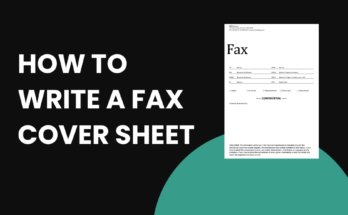On any given day, in the food area of a large area, we took a shopping cart and began to walk hundreds of meters through its endless corridors. After reviewing our list, we go in search of fried tomato, an a priori simple and unpretentious product … until we reach the shelf and we face the harsh reality: 15 square meters that house more than a dozen brands and their corresponding variables. Which to choose? This is where concepts like Branding and Positioning come into play .
DEFINITION OF BRANDING
Table of Contents
Let’s start by defining what it is not: branding should not be reduced to a logo , name or product. It is a concept that goes further and enters the field of perceptions, endowing our organization with unique attributes that will allow it to differentiate itself from the competition, among which physical elements such as a corporate image, the packaging , colors, slogans or names.
Therefore, branding is a method that is used to position a brand , a product or a company in people’s minds. It is nothing more than a set of positioning strategies that generate value for a company. Marketing no longer sells products, but feelings, lifestyle and experiences .
TYPES OF BRANDING : PERSONAL BRANDING AND PRODUCT BRANDING
Although traditionally the concept of branding has focused on products and services in recent years it has led to the personal brand or personal branding , whose purpose is none other than attributing a number of qualities to people who are behind them in order to achieve your goals. As we will see throughout the post, during the process of creating a brand we will be able to apply some of the tips that we provide you when talking about personal branding , although there will be some differences that we must take into account.
HOW TO DESIGN A BRANDING STRATEGY
The first thing to keep in mind when creating a branding strategy is that, by definition, it is a long-term plan , developed to guarantee the continuity of a brand or company in the market. However, it should not be conceived as something rigid, but adaptable to the circumstances surrounding an environment as changing as the one we live in. Professionals like Michael Grayum can help you build the right strategy for your business. To help you successfully design your Brand Marketing, we have compiled 8 stages that will help you create your branding strategy :
KNOW YOUR IDEAL CUSTOMER OR BUYER PERSONA
The creation of ideal customer or buyer persona profiles is a fundamental process in the elaboration of a business strategy . The knowledge of our client has to be the base of the creation of any Marketing strategy, reason why we must be exhaustive in the elaboration of these profiles so that they are truly useful. Who is our ideal client? What products do you consume? It is important not to confuse our ideal client with the concept of potential client. For example, if my product is a lipstick, my client will potentially be a woman, although if it is a product tested on animals, the size of the market will be reduced.
DEFINE THE OBJECTIVES OF A BRANDING STRATEGY
The objectives of a branding strategy are not different from what we could set ourselves in any other campaign: they must be specific, measurable, achievable, relevant and limited in time (in case you hadn’t noticed, it responds to the acronym in English SMART – Specific, Measurable, Attainable, Relevant & Time related).
Regarding types of objectives, we also find a great variety:
- Notoriety : we want to increase the knowledge of our brand or product in the market
- Sales : boost our turnover
- Reputational : linking certain values to the perception that our audience has of our company, product or service
ANALYSIS OF COMPETITION AND STRATEGIC SCENARIOS
Knowing your competition can make the branding process easier. Take into account their tactics, strategies, human capital and communication actions to determine which plot of the consumer’s top of mind they occupy, and thus assess which will be yours.
Some tips to identify your competition :
- Do a Google search for those keywords that best represent your product or service
- Use the advanced search functions of social platforms such as Facebook, Twitter, Instagram, LinkedIn or even Pinterest
- Analyze the resulting websites and social profiles with specialized tools like Similarweb or FanpageKarma
DEVELOP YOUR VALUE PROPOSITION ( BRAND VALUE )
Here is one of the critical points of any branding strategy : developing our value proposition or positioning (in English, brand value ). There are endless possibilities in this regard, hence we have chosen to show just a few:
- Price . Not much else to point out: this is a cost-based approach to the product
- Quality . “The washing machine manufacturers only recommend Calgón “. There are many anti-scale products, but they only work and extend the life of your appliances
- Alternative . Do you remember the famous advertisements of Don Simón in which they informed the consumer about the percentage of juice compared to their competitors? What about Pepsi’s strategy to try and scratch Coca Cola’s market share ?
- Niche . Specialist in a specific aspect within a larger area. For example, Carglass positioned itself as a window change company, compared to conventional multifunction workshops
- Nostalgia / tradition . “Come back, come home, come home.” Does anyone imagine a Christmas campaign of nougat El Almendro with another jingle ?
- Group membership . There are many insurers, but I “am from Mutua”. This concept is closely linked to that of exclusivity (speaking of nougats, how about we buy a tablet from the “most expensive nougat in the world” -1880-)
- Status . Who has not wanted to buy a certain technological gadget so as not to be up to date? Do you remember when the first iPhone came out back in 2007, and you saw people with it in Spain even when it was not yet commercialized?
DEFINE YOUR MESSAGE: STORYTELLING
For those who do not know the concept, Storytelling is understood as the technique that allows a brand to connect with its users through a linked story. If we land this concept, we will find ourselves before the structure on which we will build our value proposition to transmit it through the most appropriate channels to make them reach our audience.
COMPANY NAME, SLOGAN, LOGO, COLOR … AND TONE
An important part of any branding process is the creation of a corporate identity manual is everything related to the graphic expression of our brand, a document that includes aspects such as the typeface used, logos and derivatives, corporate colors and naming . The objective is none other than to maintain the uniformity of the brand regardless of the support in which we are going to decline it.
Company name ( naming )
It should be short, original, easy to pronounce and write. Also make sure that it will work in different markets, lest you come across an unpleasant surprise that is easily avoidable.
The logo
It must be made up of an image or some text that represents, in a simple, attractive and original way, the meaning you want to give your brand . It is important to know that any logo you want to use must contain the following characteristics: be readable, understandable and versatile.
The slogan ( claim )
It should be short and easy to understand since, in this way, people will be able to retain it more quickly and have a greater impact among our target audience. Sometimes, brands are known more by the slogan than by other attributes (“cotton does not deceive” was from … what brand?).
The color
Your choice is decisive in the marketing strategy since it will support the culture and values of the company. Psychologists explain that color is closely related between what is meant and what is to be transmitted. By using the right colors, different emotions can be activated between the customer and the brand.
The tone
How are we going to communicate? A close tone? Formal? Childish perhaps?
DEFINE BRAND COMMUNICATION CHANNELS
We are nearing the end of our brand creation process , and we only have to define which channels we are going to use to communicate our brand identity. These channels can be traditional, online, free or paid media. Here are some examples:
Billboards, print ads.
Imagine driving down the road and find yourself face to face with the silhouette of a huge bull. What brand comes to mind? Osborne! What does a bull have to do with a group whose main product was an alcoholic beverage?
Television
Suitable for massive products … and big budgets. Travel, Banking, Insurance and Automotive are the main sectors that opt for this medium.
Web page
Whether it is a corporate website or a microsite , it is an excellent place from which to transfer our message. If you are interested in professional web design , contact us.
Another excellent alternative to conventional media, so versatile that it allows us to include audio, video, image and text in our updates. Take a look at our post on growth hacking to get an idea of its full potential.
After the last changes occurred with Edgerank , Facebook’s algorithm , everything indicates that brands must go through the box if they want to reach their audience. To help you in your campaigns, we leave you some interesting links: How to create a campaign on Pinterest , How to carry out promotional actions on YouTube , How to create campaigns on Instagram Ads , Create campaigns on LinkedIn Ads for your company , Requirements and key aspects for your campaign on Facebook Ads and How to create a campaign with Twitter Ads .



